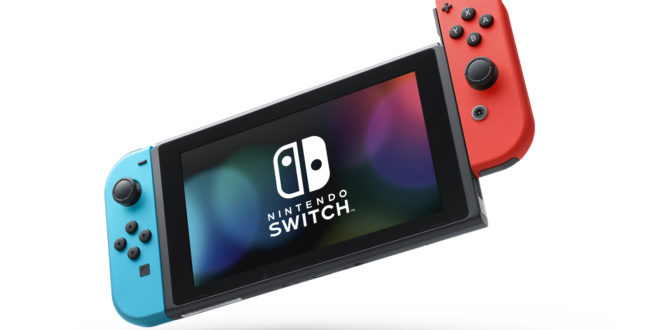So it seems as though a new Switch is coming this year, with Bloomberg reporting today that sources familiar with the situation have suggested that components will go into production this summer for a launch before the end of the year.
The key information at present comes from sources close to Samsung’s display business. In short the company will manufacture a new 7in OLED display for the new version of the Switch. Beyond that, though, little is known about the device.
A 7in OLED will undoubtedly be an improvement over the current device, but it might not represent a very radical overhaul. The display is still 720p, matching the resolution of the current handheld unit, and it has apparently been selected for its relatively low-cost, with the production of ‘rigid’ OLED panels outstripping demand, as the latest phones have all moved to flexible panels, which are easier to squeeze into ever smaller handsets.
The 7in screen looks likely to fit in a similarly-sized unit then, but with smaller bezels.
The existence of the new screen doesn’t provide any clue as to a new chipset to power the device. Although rumours of a 4K output make that almost certain, as does the age and relative power inefficiency of the current Nvidia chipset, which was hardly new when it was utilised now four years ago.
A new chipset shouldn’t provide any problems, as long as Nintendo is up-to-speed in providing backward compatibility with all current titles. That process should be seamless, with all current games able to run on the new device, as has been the case with all previous Nintendo hardware revisions.
Personally, we can’t see a radical revision of the Switch design. A new, better, more power efficient screen, plus a more power efficient chipset, possibly supporting higher resolution output for new titles, or upscaling for old ones, is a sensible solution, and again one which would fit with Nintendo’s previous updates to the Gameboy Advance or 3DS devices for instance.
Purely speculation, but we’d expect the new console to remain compatible with current Joycons, which would limit its physical redesign. Any non-cosmetic changes to the Joycon would then necessitate changes to accessories such as the Ringfit device for instance. Nintendo could produce something incredible and radically different, such as the clamshell Advance SP, but to do so it would surely have to redesign the JoyCon as well.
So while there will be much excitement about a ‘new’ Switch, and the device will likely boost sales (to both dedicated fans eager for an upgrade and those yet to come onboard), we can’t see that the revision is going to be a huge gamechanger for the already incredibly popular Switch – simply because it will sell well anyway!
The only concern really is that there’s sufficient stock. The Bloomberg story mentions that there would be 1m displays produced a month from June, which would likely mean around five million made in time to then be assembled into full units and in stores for Christmas. Given the Switch has sold 80m units to date, that does not seem like a lot.

 MCV/DEVELOP News, events, research and jobs from the games industry
MCV/DEVELOP News, events, research and jobs from the games industry




